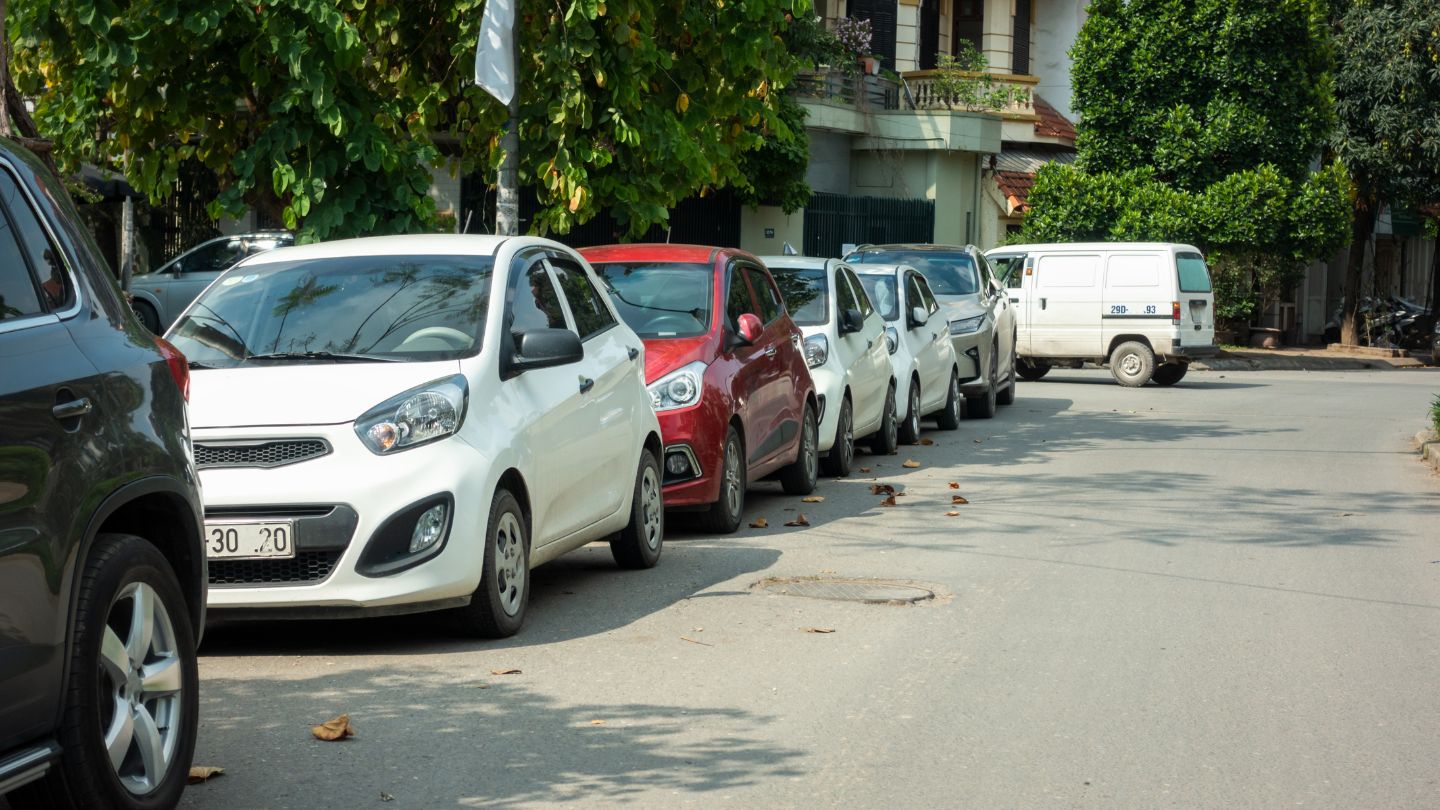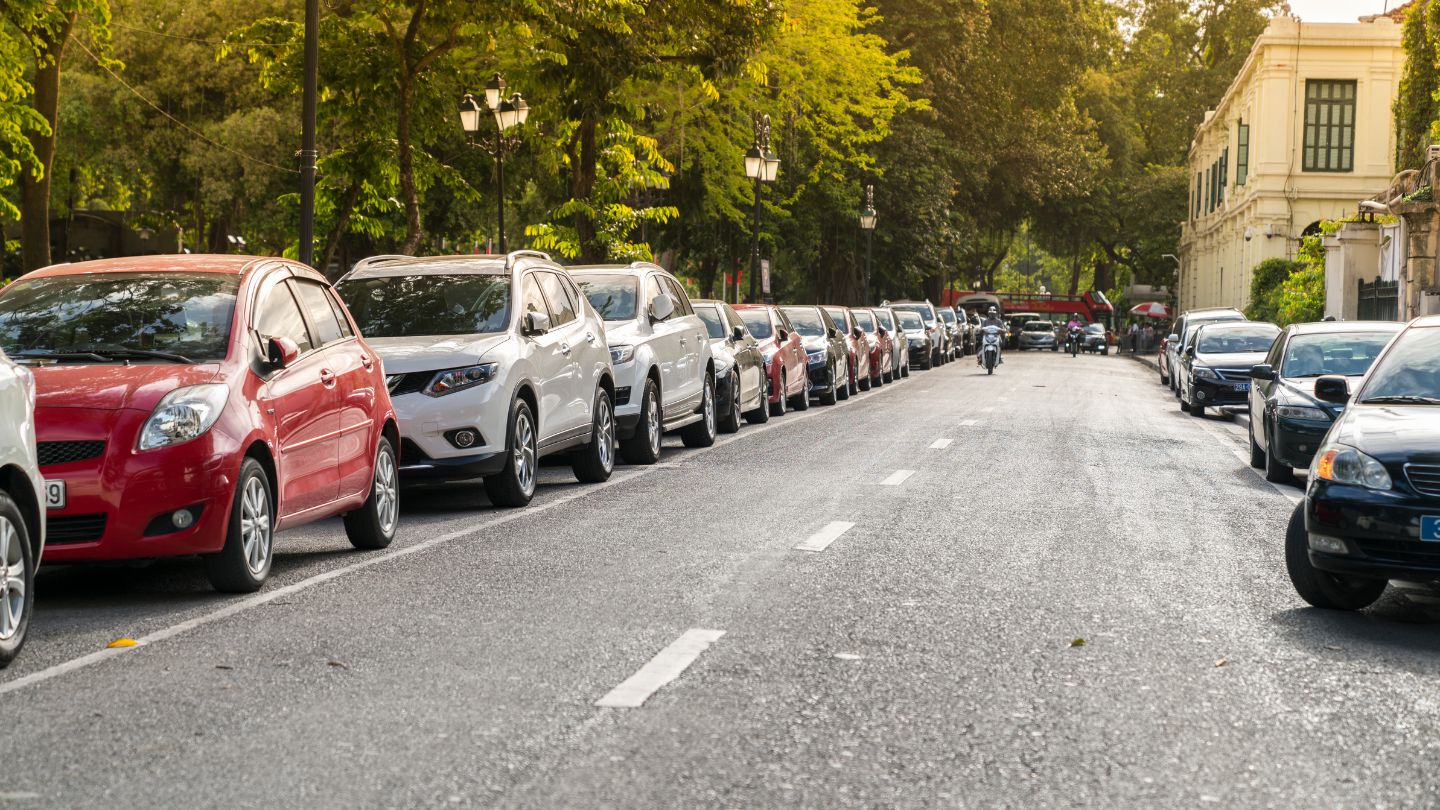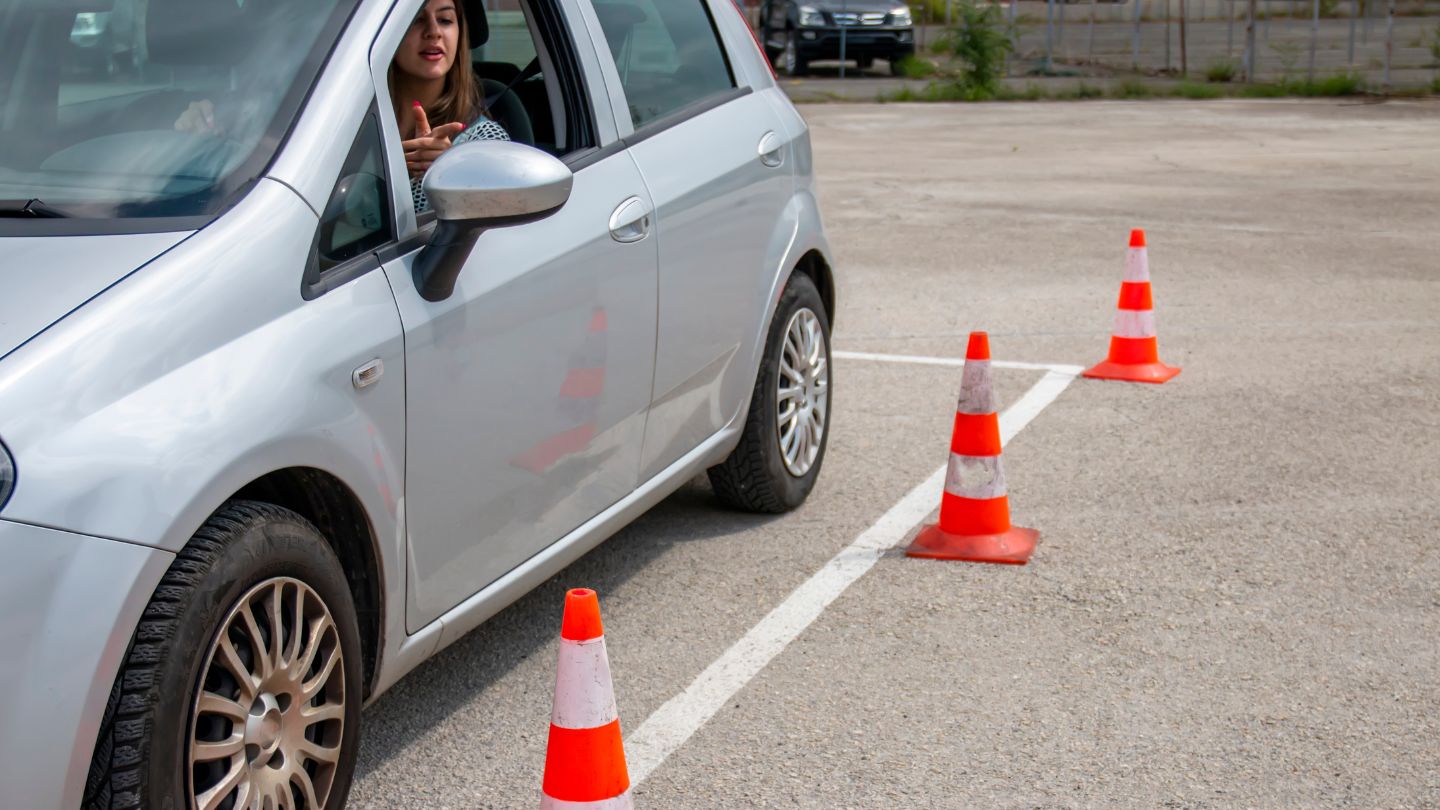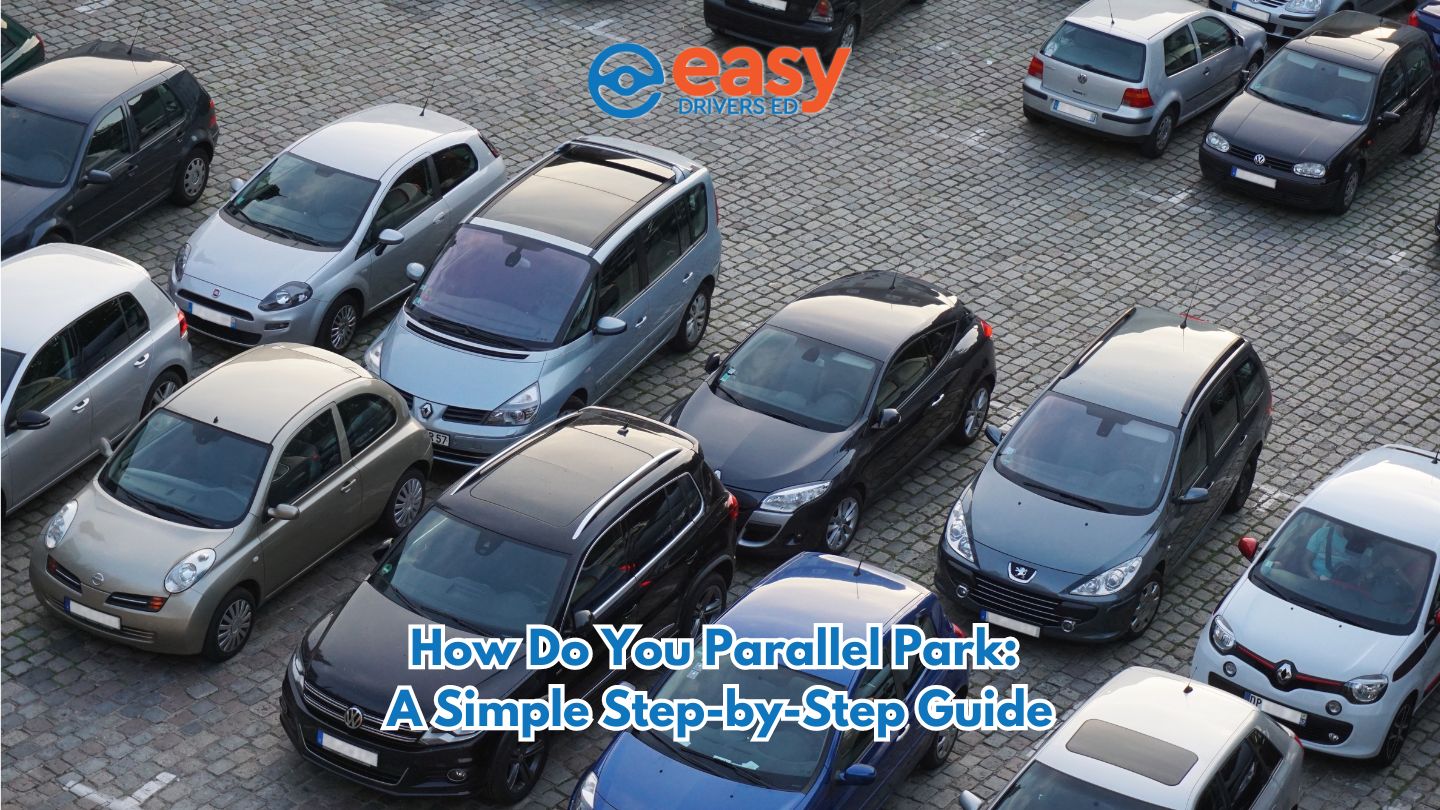Struggling with how do you parallel park? In this guide, you’ll learn clear, step-by-step instructions on preparing your car, executing the maneuver, and making final adjustments for a perfect park.
Key Takeaways
- Parallel parking is a vital skill for urban driving, helping with maneuvering into tight spots and passing driving tests.
- Preparation is key: find a suitable spot, check surroundings, and align your vehicle correctly before starting the maneuver.
- Modern technology, like park assist systems, can make parallel parking easier and safer, allowing you to focus on speed control while the system assists with steering.
Why Parallel Parking is Essential

Navigating city streets often necessitates the ability to parallel park, a skill that is not only crucial for passing driving tests, but also enhances everyday urban driving experiences. Being adept at maneuvering into tight parking spaces amid bustling thoroughfares or crowded lots can alleviate time and stress by opening up parking spots that many drivers typically avoid.
Gaining expertise in parallel parking strengthens your confidence behind the wheel, allowing you to feel more competent and poised, particularly in metropolitan areas where precision is necessary due to scarce parking spaces.
Mastery of parallel parking is imperative since several states include it as part of their driver’s license examination requirements. This proficiency ensures success when taking the test and equips one with essential competencies for confronting real-life traffic scenarios.
Preparing to Parallel Park

Begin by identifying an appropriate parking spot that’s about one and a half times the length of your car. Signal with your turn indicator to communicate your intention to park, thereby informing other drivers and pedestrians, which facilitates a safer maneuver.
Position your vehicle parallel to the parked car directly before the space you’re targeting, keeping 2-3 feet away. This strategic placement primes you for entering into the spot effortlessly. Ascertain that your vehicle is aligned straight and parallel prior to backing up.
Prioritize verifying there are no obstacles or vehicles nearby. Attentively check all mirrors and blind spots to ensure ample clearance exists around your car. Approach this setup phase patiently and meticulously.
Ascertain that there’s sufficient room available for executing the parking action without making contact with surrounding cars or curbsides. Correct initial positioning along with maintaining a safe separation distance simplifies subsequent steps of parking. With these preparations in place, move on confidently to performing the actual task of safely situating your vehicle within its designated area.
Checking Your Surroundings
Prior to moving your vehicle in reverse, meticulously survey the vicinity for pedestrians, cyclists, or other vehicles. Confirming that there is no traffic behind your vehicle can help prevent collisions.
Continually observe your environment using rear-view mirrors to identify potential impediments or other cars. This vigilant scanning is essential for keeping a secure separation from nearby automobiles and sidewalk edges, which facilitates safer and efficient parking maneuvers in areas with heavy traffic.
Starting the Maneuver
Initiate the parking process by turning your steering wheel entirely to the left. As you begin to reverse, adjust your car’s trajectory so that it is angled appropriately for entering the designated parking space. Proceed with caution and at a reduced speed, remaining vigilant of both your surroundings and what can be seen through your mirrors.
Once you have backed up enough that the front end of your vehicle has moved past the back bumper of another parked car ahead, redirect by rotating the steering wheel to the right in order to guide your car into position within its intended spot. Keep moving backwards slowly until you align with this other vehicle’s rear bumper before halting.
To finalize positioning yourself in relation to other vehicles around when only partial space remains visible from behind you after covering up their taillight using a side mirror on our right—stop reversing movements then angle tires fully towards curb’s direction nearby. Continue doing this cautiously until properly slotted inside without impacting either roadside obstruction or surrounding cars.
Straightening and Adjusting
Once your vehicle is predominantly in the parking space, align the wheels properly and make any required adjustments. Continue to reverse slowly, gradually returning the steering wheel to its neutral position so that your car lines up parallel with both the curb and neighboring parked vehicles.
Should you find your vehicle too near to either the curb or an adjacent automobile at the rear, engage forward gear for a slight adjustment of placement. By inching ahead or reversing just a bit. You can ensure that there’s ample room before and behind your car, confirming it rests well-positioned within its designated spot.
Finalizing Your Position
Make certain that your vehicle is properly aligned between the cars ahead and behind when parking. Keep it 12 to 18 inches away from the curb, so you are clear of traffic but still safely off the road.
Once your car is in position, activate the parking brake to ensure it stays put and doesn’t roll away, which is particularly important on slopes. If you’re not satisfied with how your car is parked, feel free to reposition until you are happy with its placement.
Common Challenges and Solutions
Engaging in parallel parking, particularly within confined spaces or busy traffic lanes, can prove intimidating. One often encounters the difficulty of managing impatient other drivers. Maintain your composure and concentration during this process, and remember to activate your hazard lights to communicate with fellow motorists that you are attempting to park.
When faced with the task of parking alongside steep curbs, a cautious and gradual angled entry is critical for preventing any harm to your vehicle. Should the available spot seem overly restrictive, it’s wise to search for an alternative area that is more conducive for parking. Enhancing one’s parallel parking proficiency while remaining cognizant of such hurdles can help alleviate tension associated with this maneuver.
Practicing Parallel Parking

Perfecting your skills in parallel parking comes with consistent practice. Begin on a tranquil street or within an unoccupied parking lot, employing cones or designated items to imitate actual parking conditions and hone your abilities away from the stress of live traffic.
As you grow more assured in your capabilities, gradually narrow the space between the cones to mirror more restricted parking spaces. Continual repetition across diverse environments will bolster confidence and enhance your technique until parallel parking becomes automatic for you.
The Role of Technology in Parallel Parking

Advanced technology greatly simplifies the task of parallel parking. By employing cameras and ultrasonic sensors, park assist features deliver live imagery and alerts to boost your perception of space, aiding in precise navigation as you execute the parking process.
A number of vehicles now come with options for semi-automated or even fully automated systems that assume control over steering during a park procedure while allowing you to manage velocity. This progress alleviates anxiety associated with parking and heightens safety when maneuvering into restricted areas.
Read more: Navigating Parking Lot Safety: Essential Tips for Drivers
Benefits of Mastering Parallel Parking

Gaining expertise in parallel parking can significantly boost your confidence and skill set when driving, especially valuable in densely populated city areas where finding a spot for parking is challenging and requires accurate maneuvering.
By becoming adept at this type of parking, you not only reduce the chances of collisions and damage to your vehicle, but also adhere better to established parking regulations. This proficiency aids in optimizing the use of each parallel parking space, leading to improved traffic circulation and decreased road congestion.
Summary
To sum up, becoming adept at parallel parking is a crucial proficiency that can boost both your confidence and adeptness while driving. Adhering to the detailed procedure from this instruction will facilitate competency in this important technique—from getting ready and scanning the area to securing your car’s final spot. The advantages of mastering parallel parking go well beyond just clearing your driving test. They encompass time efficiency, minimized stress levels, and augmented safety measures.
Consistent practice remains vital. Employ the strategies and advice presented here, embracing modern technological aids when necessary. Through commitment and repetitive training, you’ll be able to tackle parallel parking effortlessly and maneuver through city streets smoothly.
At Easy Drivers Ed, we are dedicated to helping you become a confident and skilled driver. Our comprehensive driver education programs are designed to provide you with the knowledge and practice needed to master parallel parking and other essential driving skills. Visit our website at Easy Drivers Ed to learn more about our services and start your journey towards becoming an expert driver today. Contact us today to get started or to learn more about our driver education programs.
Frequently Asked Questions
Why is parallel parking important for urban driving?
Parallel parking is essential for urban driving as it helps you maneuver in tight spaces and is often a necessity for passing driving tests.
Mastering this skill ensures you can confidently handle the parking challenges that city life presents.
How do I prepare for parallel parking?
To prepare for parallel parking, look for a suitable spot, signal your intent, and align your car next to the vehicle in front of the space.
This sets you up for a smooth maneuver.
What should I check before starting the parallel parking maneuver?
Before you start parallel parking, make sure to check your mirrors and blind spots to ensure the area is clear of pedestrians, cyclists, and other vehicles.
Safety first!
How can technology assist with parallel parking?
Technology can really simplify parallel parking by using sensors and cameras that offer real-time visuals and alerts. This helps you park more easily and accurately, taking the stress out of the situation.
What are the benefits of mastering parallel parking?
Mastering parallel parking boosts your driving confidence and saves you time while parking in tight spots.
Plus, it helps you avoid accidents, making your driving experience safer and more efficient.

